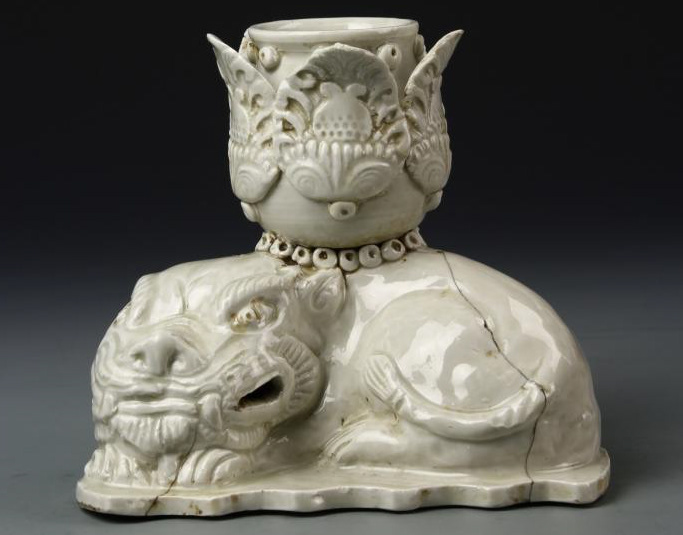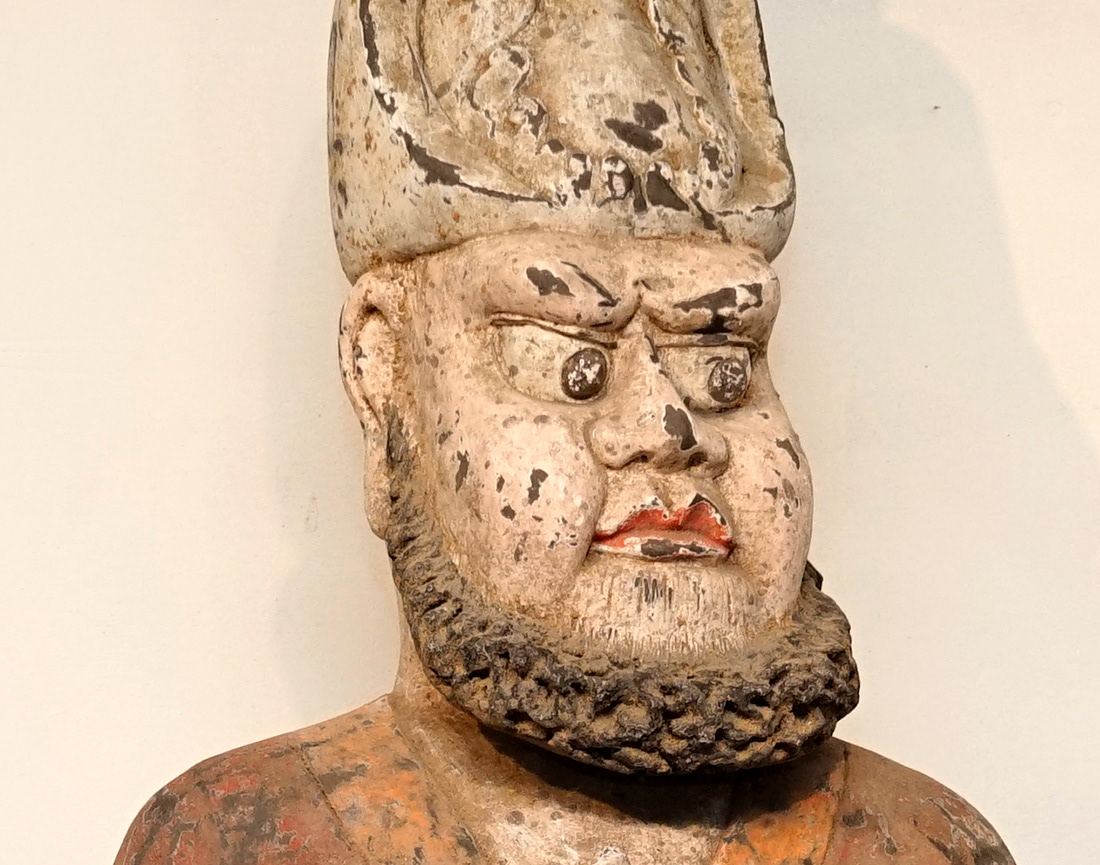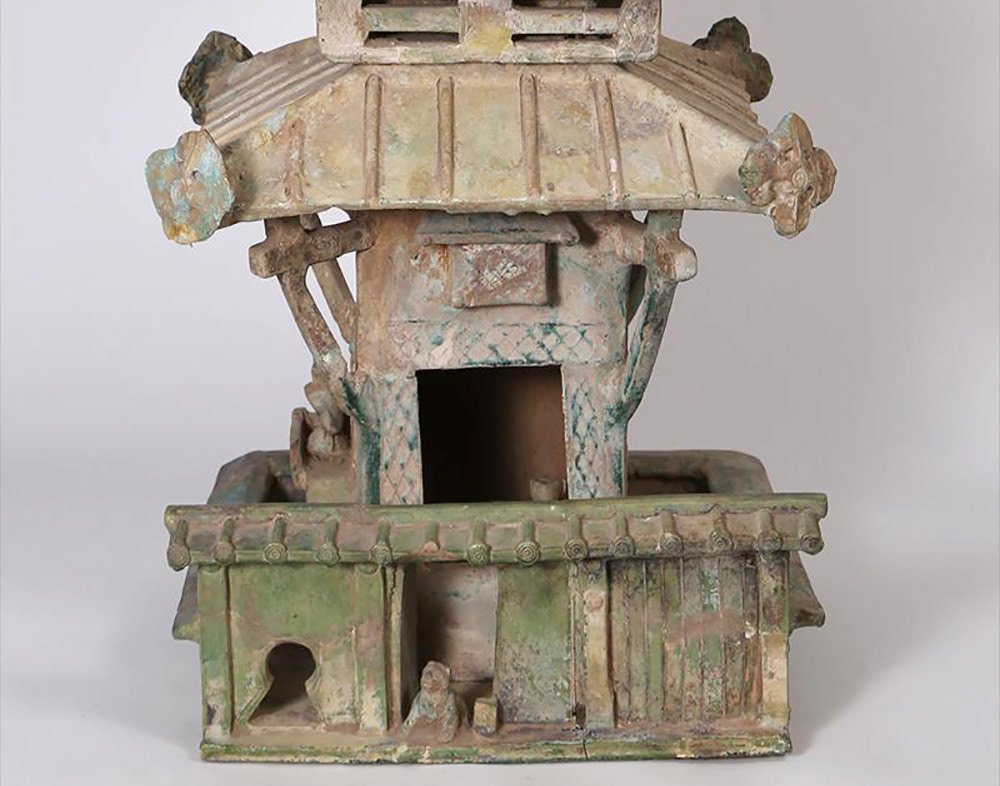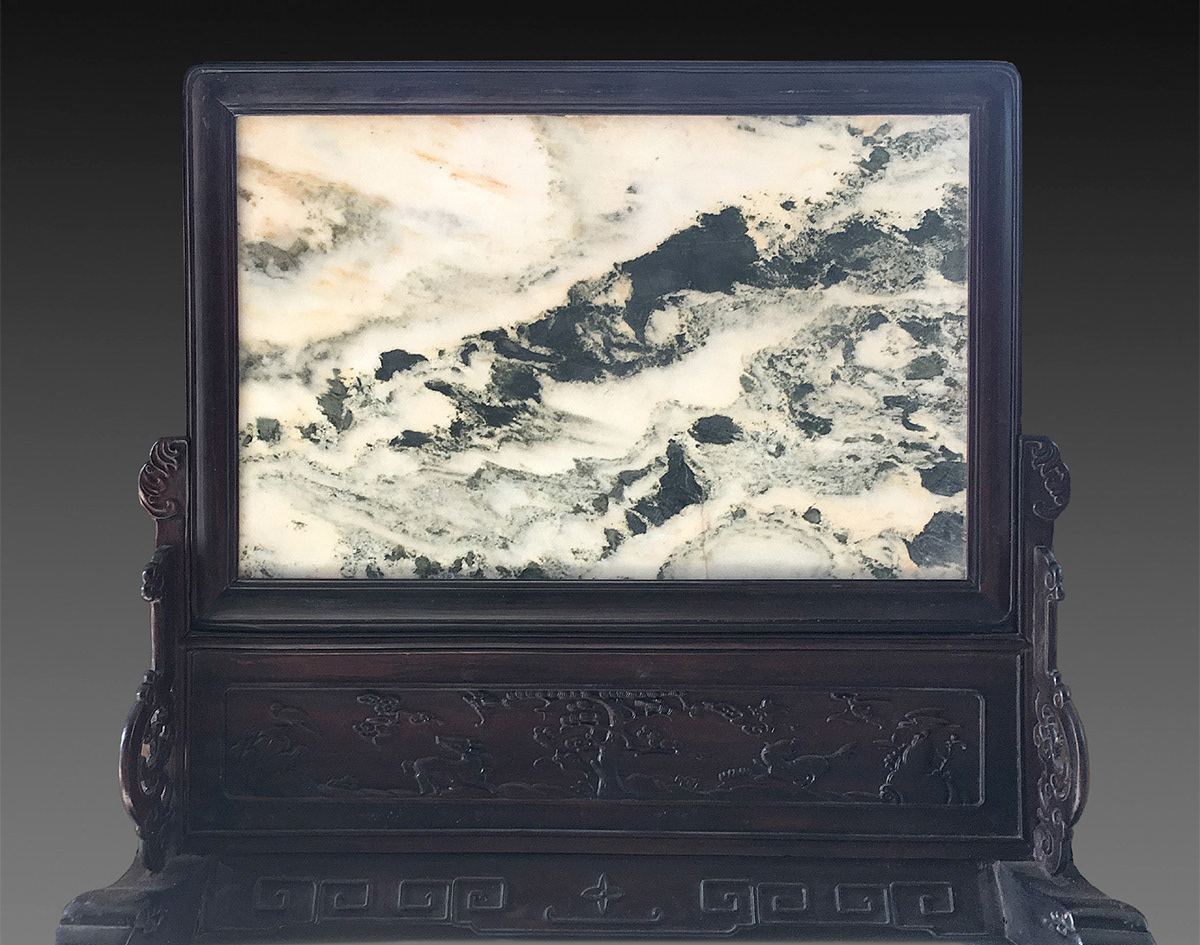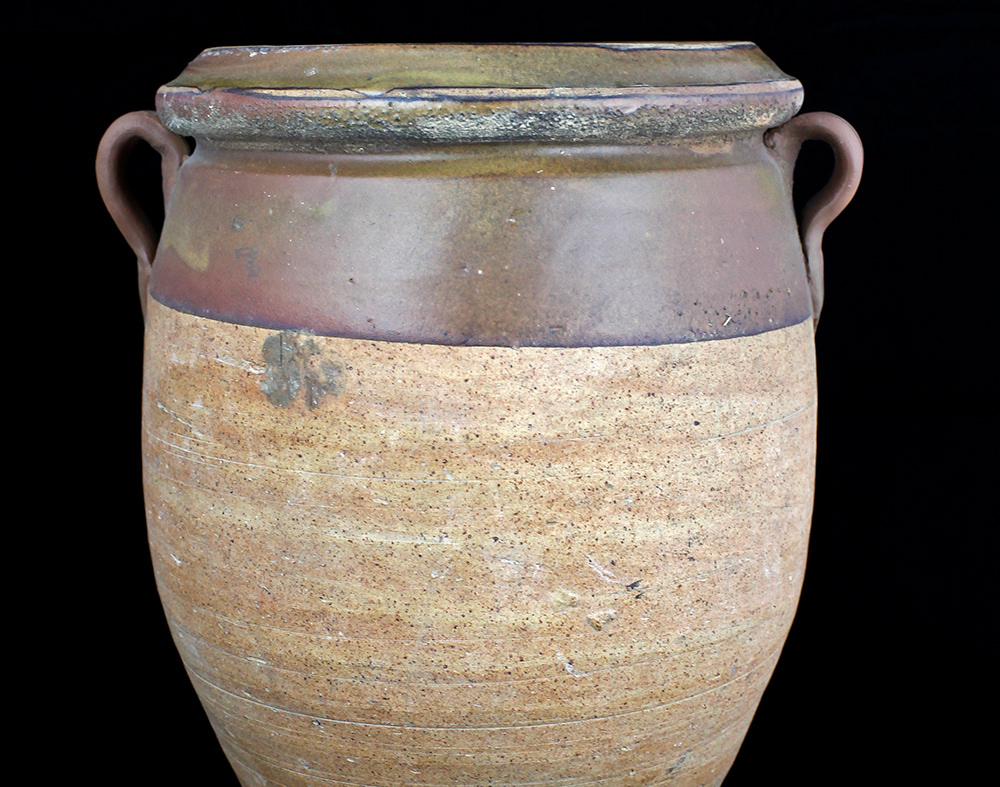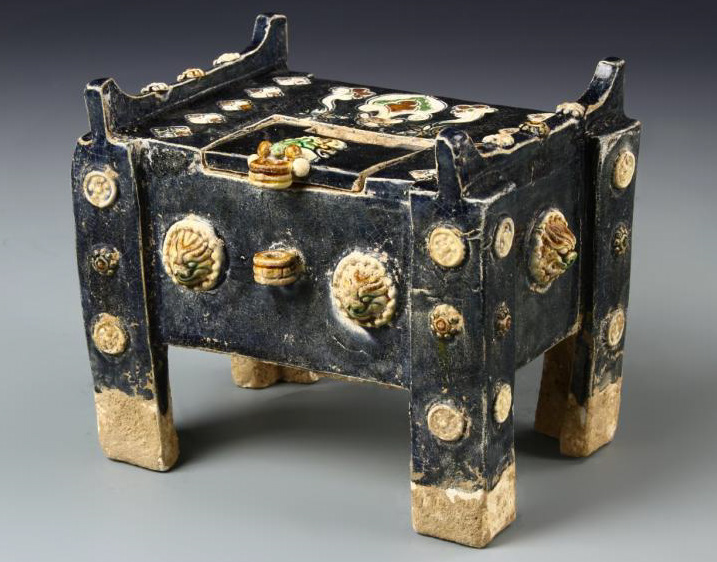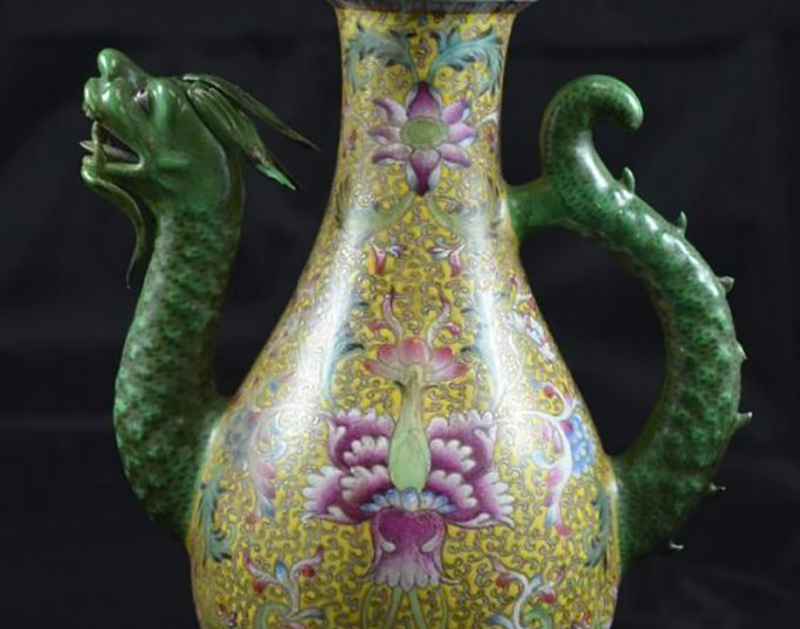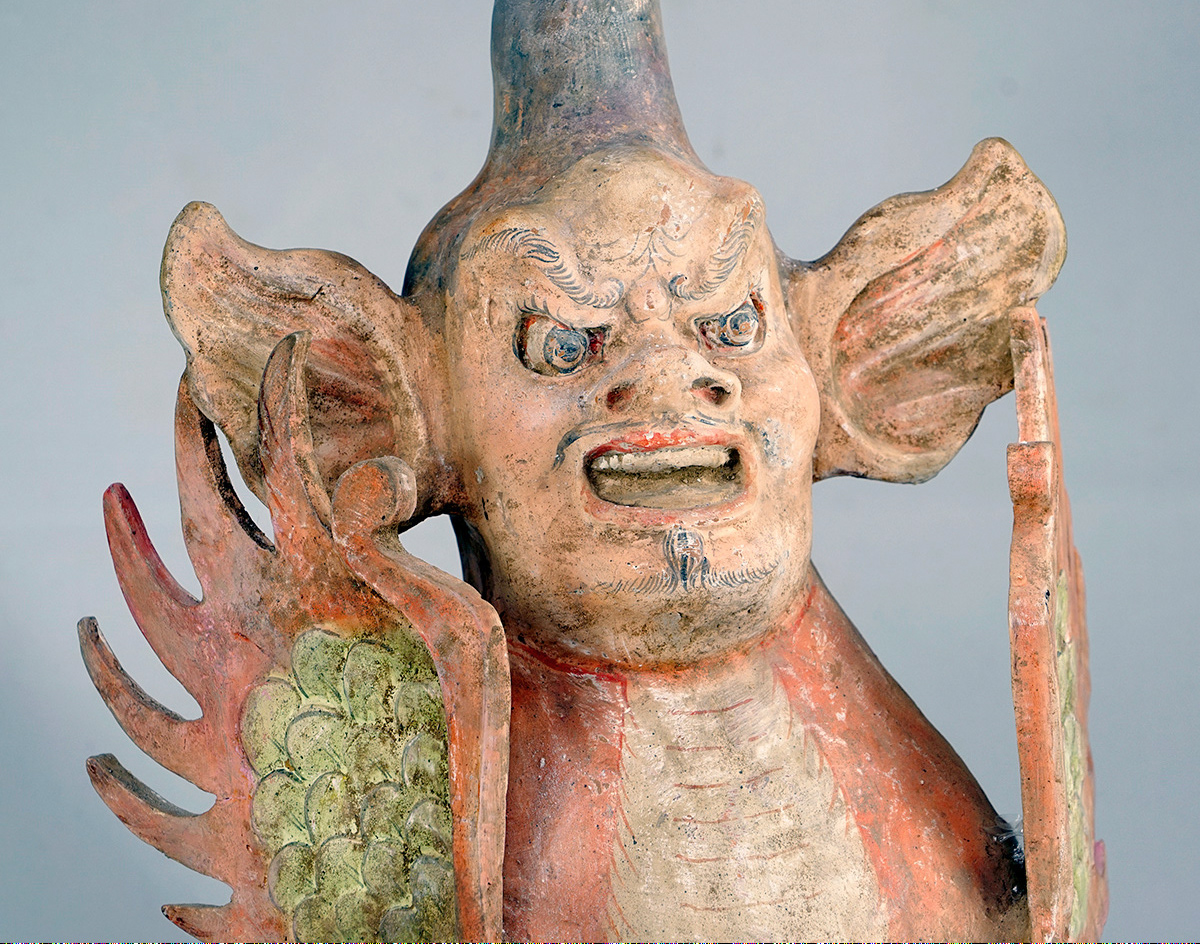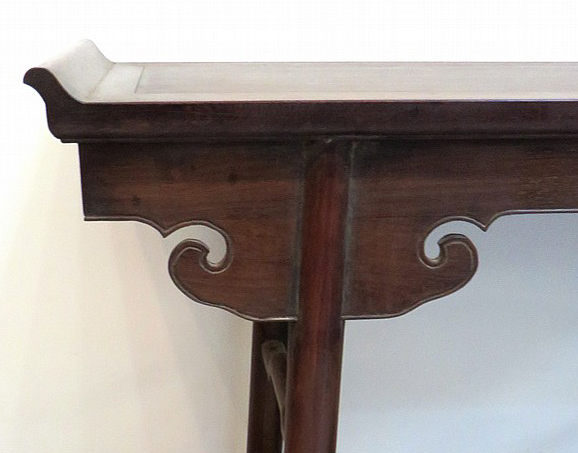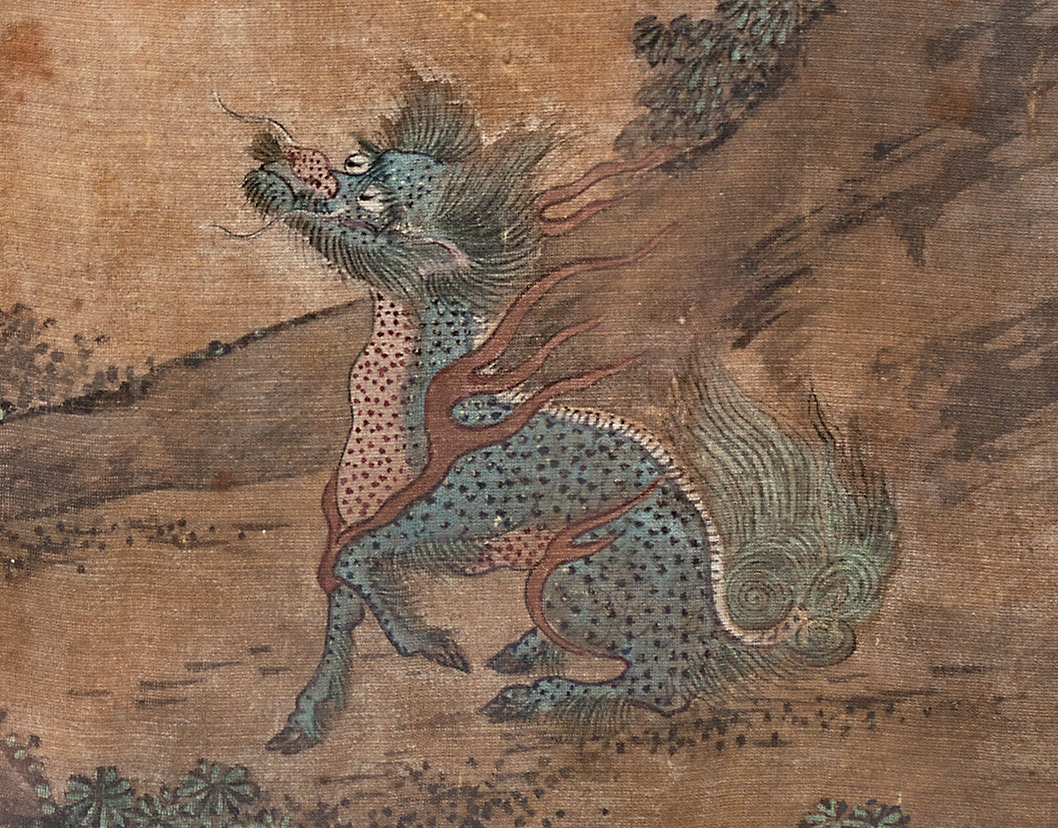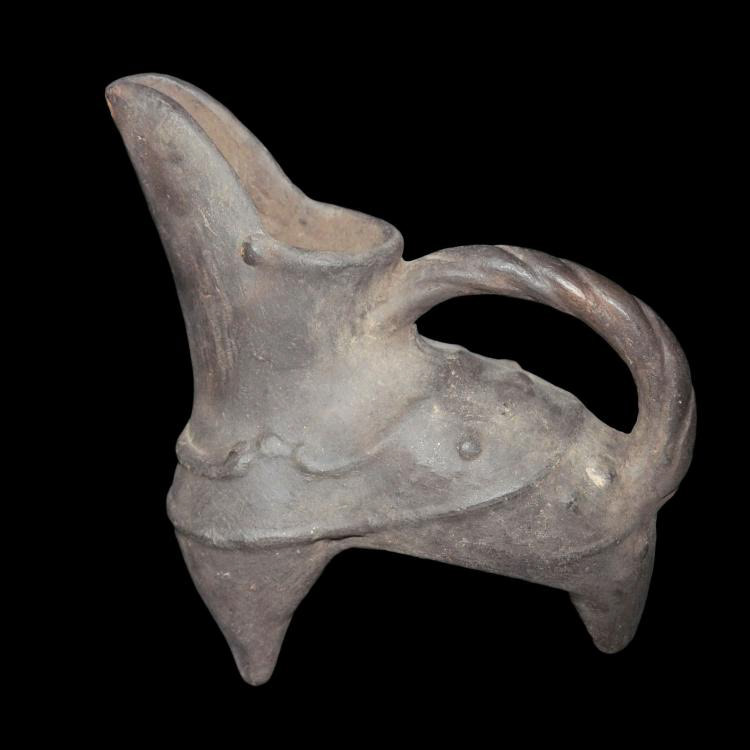

LONGSHAN CULTURE, (3000 – 1900 B. C.) This Gui has "metal-worked" qualities. A metal jug of this shape would be roll-joined and riveted. The handle is made of half-a-dozen lengths of thin clay rolls, pressed together and twisted, reminiscent of ancient fine metalworking techniques with wire. The rolled edge of the top rim and the clay shoulder underneath the handle appear to be studded with large round rivet heads, as if it is made in sheet copper or precious metal. The Gui is a ritual vessel for warming wine or water. Black earthenware 9.375 in. (23.8 cm.) height $1500

